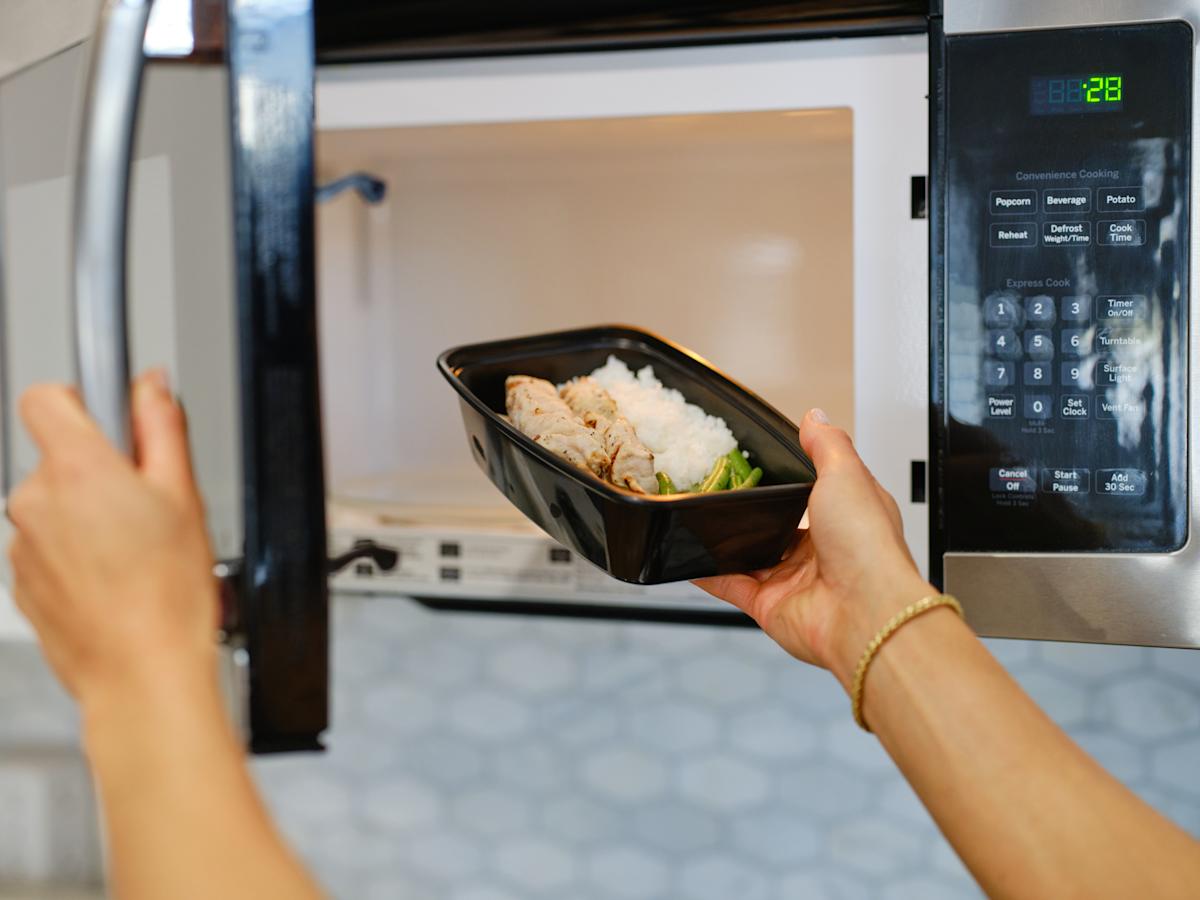When life gets busy, the last thing you want to think about is making an elaborate meal for yourself, which includes not only the whole process of cooking but also washing multiple pots and pans. That’s why it can be tempting to turn to store-bought frozen meals: They’re cheaper than takeout, quick to cook and last a long time in your freezer. Plus, they’re hands-off: The most you need to do is peel back the plastic film and slide that baby into the microwave.
It all feels like a win-win — if frozen meals didn’t have such a bad nutritional rap, that is. They’re full of sodium. They’re packed with preservatives. And they’re definitely not as nutritious as freshly made meals … right?
But experts say there’s a lot more to consider. While there can indeed be nutritional downsides, not everything you pick up in your grocery store’s freezer aisle is necessarily bad for you. Here’s what to watch for when you want a meal that’s convenient and healthy.
The downside of frozen meals
There are a few reasons why frozen meals have developed a bad reputation over the years, Roseanne Schnell, a dietitian at telehealth provider ShedRX, tells Yahoo Life. Many of these premade meals are full of low-nutrient ultra-processed foods, which have recently been linked to a higher risk of death. And since these meals are designed to last a long time, they also contain preservatives, which have been associated with issues like poor gut health.
There’s a lot of range in the freezer aisle — from Lean Cuisine to Hungry-Man frozen meals — and nutritional content will vary. But what concerns Samantha Cochrane, a dietitian at The Ohio State University Wexner Medical Center, is the abundance of frozen items that lack “vitamins and minerals.” Think of your frozen pizzas, creamy pastas and deep-fried, breaded appetizers like mozzarella sticks and jalapeño poppers that are typically high in saturated fats and low in fruits, vegetables and important macronutrients.
Cochrane says that the biggest concern around frozen meals is sodium — some varieties “have greater than 50% of your daily recommended value,” she says. Consuming too much sodium — which the Centers for Disease Control and Prevention say should be less than 2,300 mg daily for teens and adults — has been linked to increased risks of chronic diseases like heart disease and kidney disease.
Why frozen meals aren’t all bad
Not all frozen meals are created equal. Schnell says that these days, health awareness among consumers has meant that many companies are now more “mindful” of foods that fall short nutritionally and that frozen meal brands are working to offer options that are “convenient and nutritious.”
Schnell says that one major benefit of some frozen meals — think TV dinners that typically offer a meat and two sides, or a pasta bowl — is “their built-in portion control and balance of macronutrients, which can help with managing calories and a healthy weight.” There’s no opportunity for seconds or helping yourself to a more generous heaping of, say, mashed potatoes.
The best way to see if you’ve picked out a good frozen meal? Check the label. Schnell recommends looking for a meal that has between 300 to 500 calories, 20 to 30g of protein and 4 to 6g of fiber from vegetables or whole grains. She also aims for less than 600mg of sodium per serving, under 6g of added sugar and less than 5g of saturated fat. Healthy Choice’s Lemon Herb Chicken or the brand’s Simply Steamers Southwest-Style Chicken Burrito Bowl both fit this bill. (And for more dietitian-approved dinners, consult this freezer meal roundup.)
If you’re scanning the freezer section, Cochrane says you should find a meal with “lean protein, starch or grain and veggies.” This might be something like a beef teriyaki bowl or a pesto chicken pasta with vegetables. Skip the “personal pizzas, Hot Pockets and pizza rolls,” she adds.
These healthier options might cost more, but they’re a decent option in a pinch. “If a healthier frozen meal helps you skip a fast food meal, or a meal from the workplace cafeteria, it might just be worth it,” Cochrane says.
The bottom line
Having frozen meals once in a while can be convenient and even healthy — if you’re picking the right options. However, it’s best not to rely on them all the time, since you may be missing out on some nutrients.
If you love frozen meals for the convenience factor, Schnell suggests finding ways to enhance their nutrition. Consider pairing a frozen meal with a side of fresh or frozen vegetables, a salad kit or even just a piece of fruit for a boost of fiber, vitamins and minerals, without much extra hassle.
Cochrane also loves a mix-and-match approach: She recommends baking fresh chicken to serve with frozen mac and cheese or cooking frozen lean beef burgers with a bun and bagged salad.
Schnell adds that there are healthy foods that can be just as effortless to whip up, such as staples like canned beans, precooked whole grains and rotisserie chicken. These can be a part of easy meal prep, or to “enhance frozen meals with extra protein, fiber and nutrients.”
And don’t sleep on frozen vegetables and fruits, which are “typically frozen at peak ripeness, sometimes making them even more nutritious than fresh produce,” Schnell says. You can microwave frozen broccoli as a simple side dish or blend frozen blueberries and bananas with almond butter and milk for a simple smoothie.
And don’t forget that you can always make your own freezer meals — with the added bonus of knowing exactly what’s in them. Consider batch-cooking a hearty stew or pasta on Sunday and adding the leftovers to your “freezer library.” It’ll take a little more initial effort, but when you’re done, you’ll have a healthier take on frozen food.


